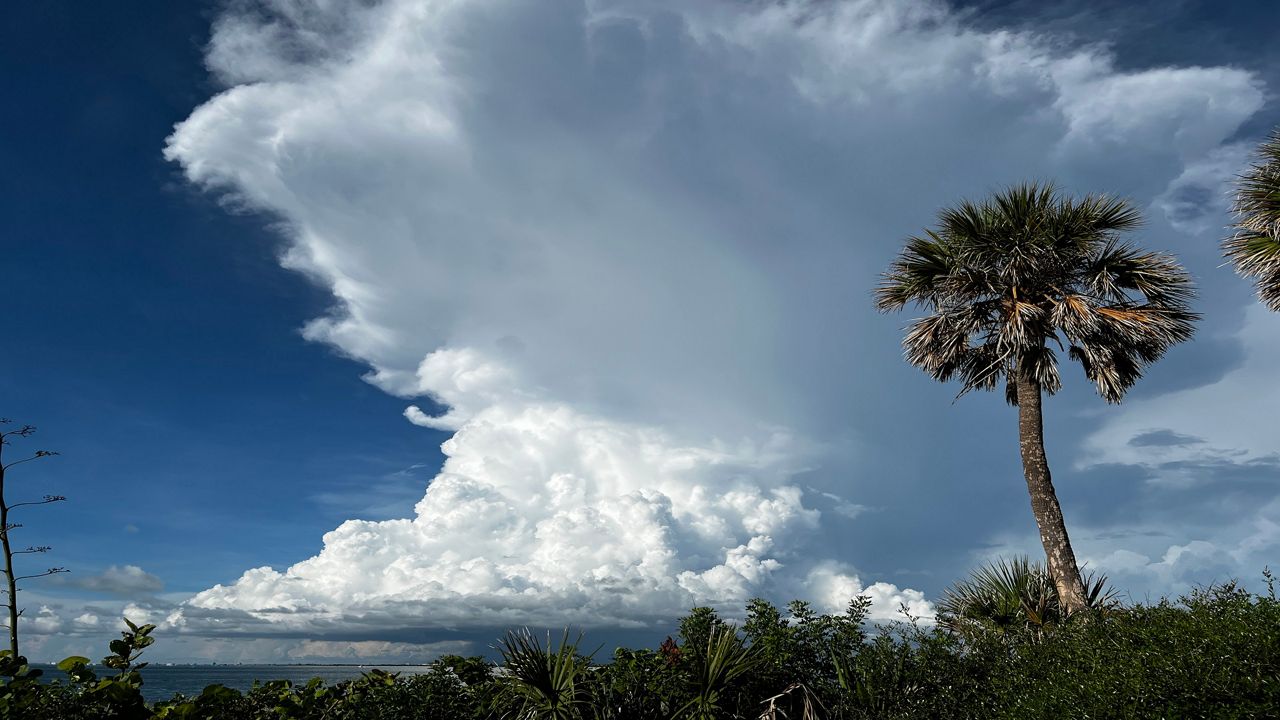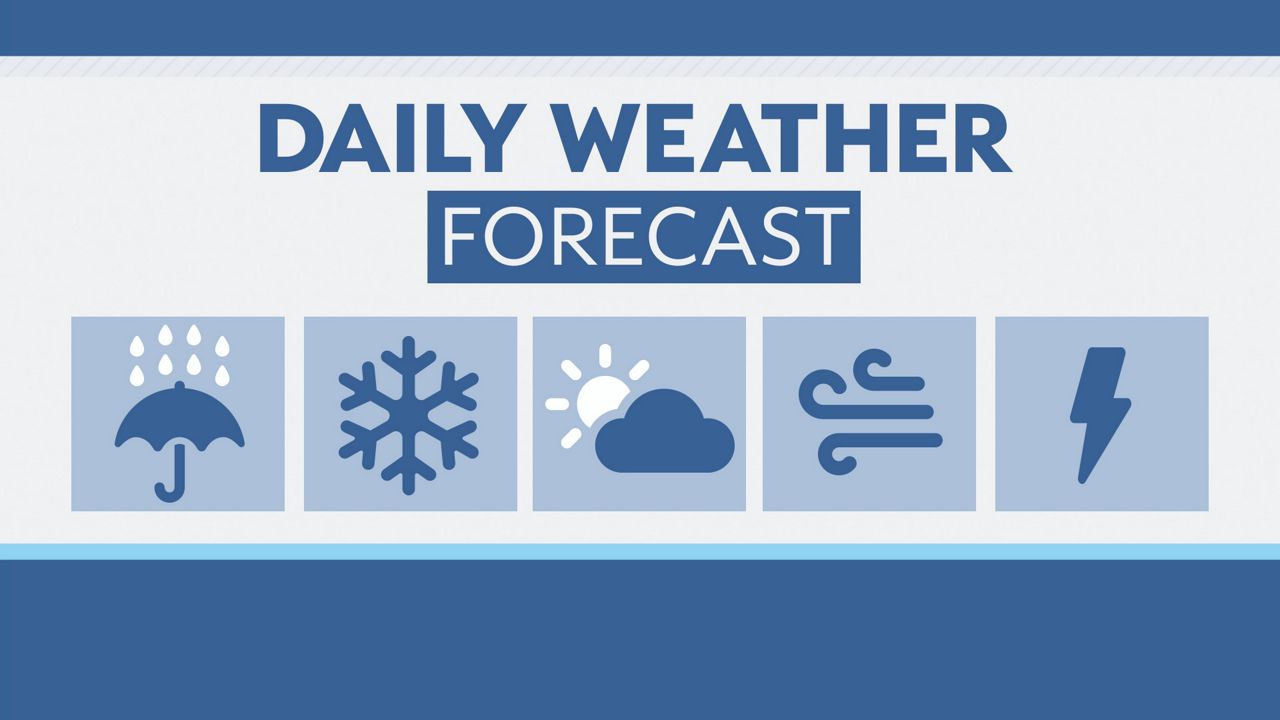From supply kits and home insurance to storm tracking and power crew training, preparing for the Atlantic Hurricane season can feel like a herculean task. But local officials say they're ready for whatever may come our way, and Spectrum News 13 has everything you need to know to stay safe.
2022 Atlantic Hurricane Season (June 1 - Nov. 30)
- In this article:
- What to put in your supply kit
- How Spectrum News 13 tracks storms
- Meet the Hurricane Hunters
- Double check your home insurance
- Physically protecting your home
- Preparing hurricane shelters
- Protecting Central Florida tourists
- Remembering Hurricane Irma
- Nursing home safety changes
- Turning the power back on
- What to put in your supply kit
- How Spectrum News 13 tracks storms
- Meet the Hurricane Hunters
- Double check your home insurance
- Physically protecting your home
- Preparing hurricane shelters
- Protecting Central Florida tourists
- Remembering Hurricane Irma
- Nursing home safety changes
- Turning the power back on
Stocking Up
When a storm approaches, store shelves empty out. This season, with lingering supply chain issues causing unexpected shortages and record inflation driving prices up, it's more important than ever to stock up early on hurricane supplies.
Local hardware store managers are getting creative to make sure their shelves are stocked.
Supply Kit Checklist
- Flashlights and extra bulbs
- Battery-operated radio
- Battery-operated lanterns
- Extra batteries (various sizes)
- Wind-up or battery-powered clock
- Matches
- First aid kit
- Duct tape
- Rain gear
- Plastic garbage bags
- Fire extinguisher
- Scissors
- Can opener
- Clean clothes
- Extra blankets and pillows
- Heavy gloves
- Food
- Bottled water (one gallon/person/day)
- Two coolers (one for drinks, one for food)
- Canned foods
- Bottled juice
- Dry pet food
Tracking Storms
When a tropical system forms, Spectrum News 13 Weather Experts leverage their combined decades of experience and critical information from the National Hurricane Center to forecast storm tracks and development.
That includes interpreting the forecast cone and spaghetti models to determine a storm's potential path and projected intensity.
But when a storm approaches Florida, Klystron 13 — the world's most powerful television weather radar — takes center stage.
Klystron 13 scans all of Central Florida every 60 seconds, providing minute-by-minute views of an approaching storm. Of course, that comes in handy all year round, not just during hurricane season.
The data feeds directly into Spectrum News 13's Downtown Orlando studios, where The Weather Experts turn it into understandable — and potentially life-saving — forecasts.
Hunting Hurricanes
While hurricane forecasting has made great strides in reliability, no ground-based system or satellite can capture a more accurate picture of a hurricane than the men and women who fly straight into the eye of the storm.
National Oceanic and Atmospheric Administration (NOAA) Hurricane Hunter aircraft take off from Lakeland Linder International Airport. Packed with the latest storm-measuring technology, they blast through a hurricane's eyewall and provide meteorologists with the most precise data available.
Protecting Your Home
When the National Hurricane Center forecasts a storm will hit Central Florida, it's not a good time to find out your most expensive possession isn't protected. Contact your insurance company before an emergency to make sure you are covered if a storm strikes.
Home Insurance Claim Checklist
- Have your policy number available
- Contact your insurance company as soon as possible
- Make a list of damages and document with photos
- Fill out and return all claims forms promptly
- Ask questions if you don't understand the process
But experts say Florida's home insurance industry is in crisis, with rates continuing to rise across the state. Lawmakers are attempting to address it in a special session.
In the meantime, with fewer companies offering policies in Florida, many homeowners are simply forced to absorb the increased premiums.
Protecting your home and its contents is more than just a financial exercise. It's physical. Before a tropical storm or hurricane storms across Central Florida, homowners should take several simple steps.
Checklist for Securing Your Home
- Remove outdoor items
- Trim dead branches from trees
- Install shutters or board up windows
- Fill gas tanks and extra containers
- Withdraw extra cash
- Move furniture away from windows
- Store important documents and valuables in waterproof containers
Hunkering Down
In the event of an approaching tropical storm or hurricane, counties open storm shelters for people who live in evacuation zones, low-lying areas and mobile homes.
Emergency management officials say shelters should be treated as a last resort.
Specific shelters are set up for people with special needs. It's important to pre-register with the state.
Not all shelters accept pets, so pet owners need to make additional preparations.
School cafeterias aren't the only places that turn into hurricane shelters when a storm approaches.
The Sunshine State welcomes tens of millions of visitors each year — and all through hurricane season. So, it's the responsibility of area hotels, theme parks and attractions to keep them out of harm's way. That includes stocking up on lots of supplies — bottled water, portable generators, glow sticks, flashlights and more.
Visit Florida urges anyone visiting the state during hurricane season (June 1 - Nov. 30) to check with airlines, hotels and car rental companies to find out about refund policies and how customers are informed of approaching storms.
Restoring Power
Tropicals systems mean power outages — the more powerful the storm, the more widespread the interruption usually is.
Local crews work around the clock to repair the power grid as quickly as possible, enlisting help from other parts of Florida and across the country, if needed.
When the lights go out, you can check outage maps and see estimated repair times here.
Protecting the Vulnerable
Power outages are potentially more dangerous than they are inconvenient.
Florida learned that tragic lesson five years ago in the aftermath of Hurricane Irma. As many as 12 people died from heat-related conditions after the air conditioning failed at a nursing home in Broward County.
Now, Florida nursing homes are better prepared to keep their residents safe.
The state's Department of Elder Affairs (FDOE) and its Agency for Health Care Administration (AHCA) responded with new rules that require all nursing homes to have an on-site alternative power source, capable of maintaining comfortable temperatures for at least 96 hours.
The Spectrum News Watchdog team combed through state data and found all facilities in the Central Florida and Tampa Bay areas currently have generators on property, but at least 15 are not in full compliance.
While nursing homes rightfully received the lion's share of reformative attention after Hurricane Irma, future flood prevention quickly became a major concern for residents of several Central Florida communities.
National Guard troops and local firefighers rescued people from rising waters around the region.
Overflowing retention ponds swamped the Orlovista area, and the Little Wekiva River rose to levels some residents of Spring Oaks had never seen before.
Five years later, some homeowners are still navigating insurance delays and contractor shortages to have their homes prepared.
Others, who may have wanted to move after Irma, simply couldn't afford to.








